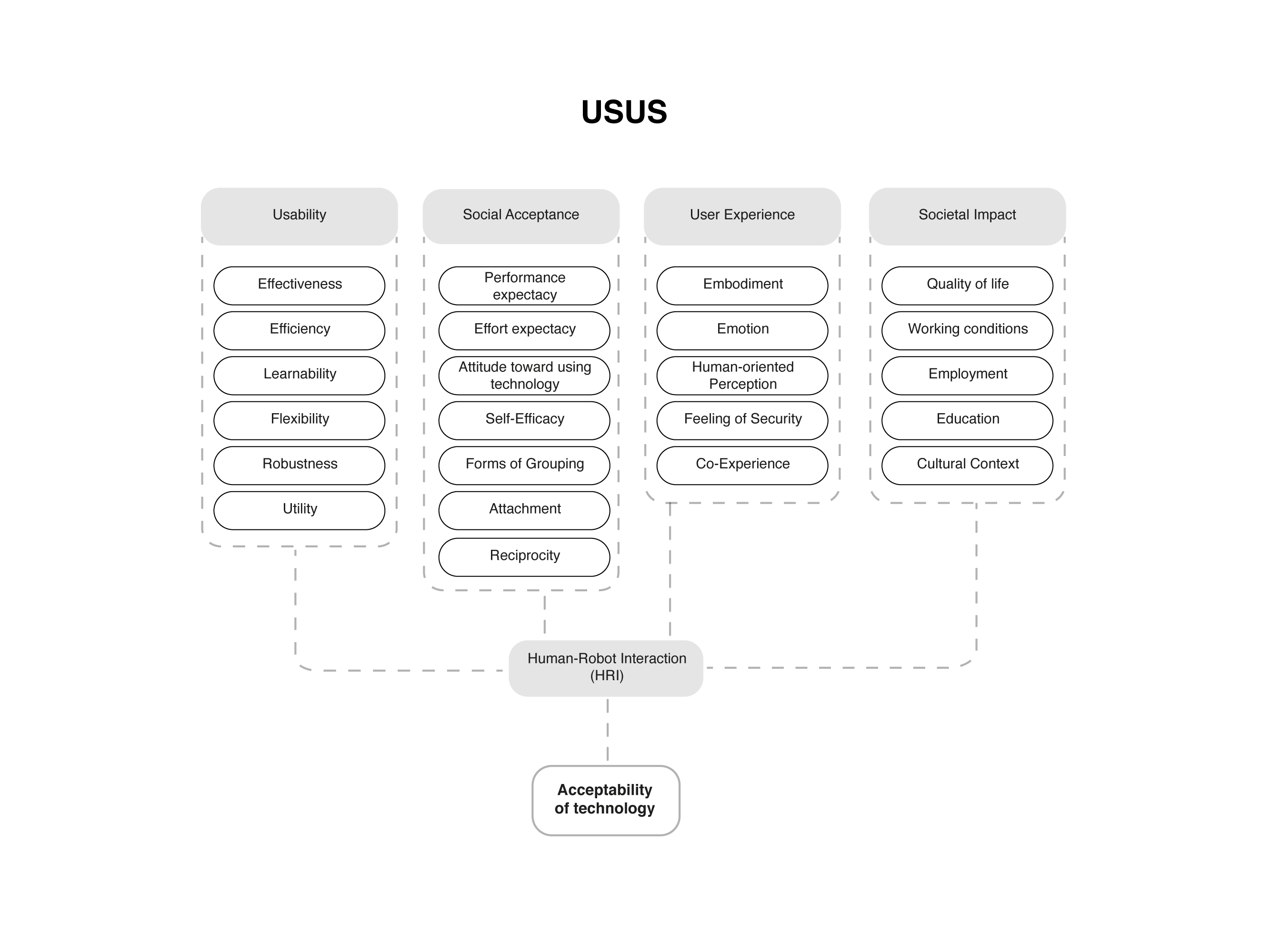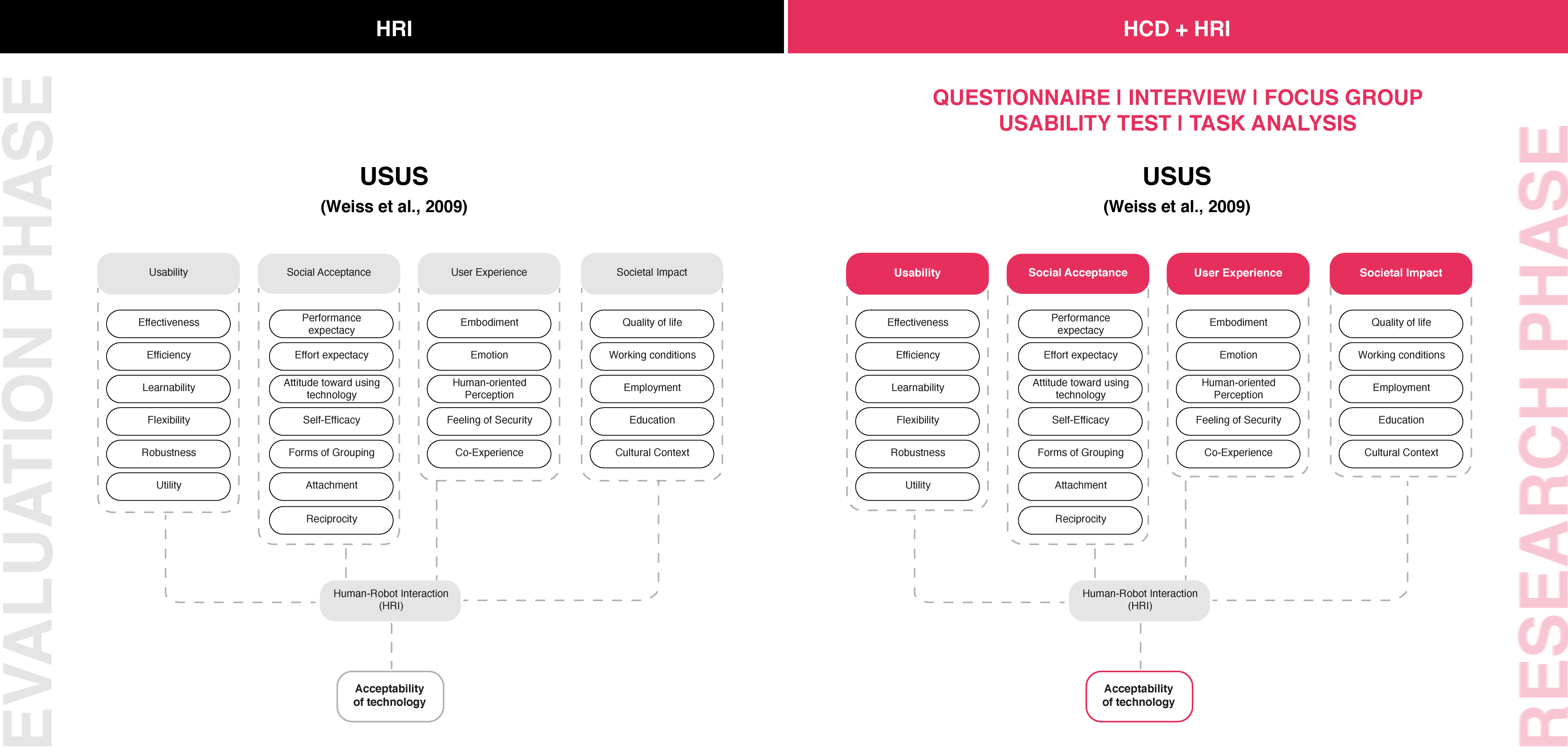USUS
Developed by Weiss et al., (2009)
Evaluation Framework for Human-Robot interaction
The USUS (Usability, Social acceptance, User Experience, Societal impact) was developed by Weiss et al., (2009) for a global assessment of human-robot interaction. The method is based on a Human-Centred perspective and includes a number of variables extrapolated from various disciplines, including HCI, psychology and sociology. The main variables determining the acceptability of robots are: usability, social acceptance, user experience and social impact.

HCD
HRI
Through the methodologies of the HCD it is possible to investigate some of these variables during the preliminary research phase on the user. Moreover, in the perspective of an iterative process, it is possible to evaluate a possible prototype or design proposal through the methods of the task analysis or usability test. In summary, the most effective HCD methodologies to analyze the selected USUS variables are: Questionnaires, structured and unstructured interviews, focus groups, usability tests, task analysis. Below is the architecture of the USUS method and the relationships between its constructs that determine the acceptability of the technology. In evidence are the influential variables for acceptability that can be analyzed in advance through the HCD methods identified in the upper part of the scheme (questionnaire, interview, focus group, usability test and task analysis).
